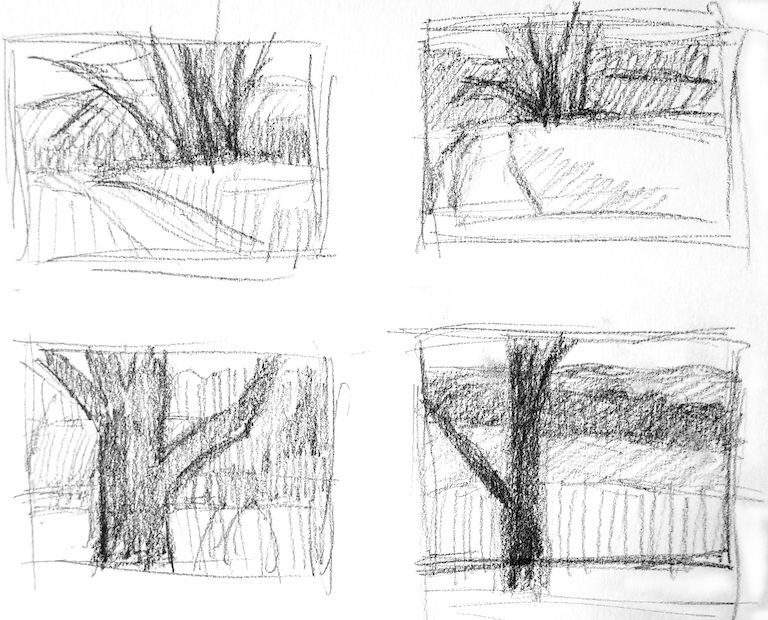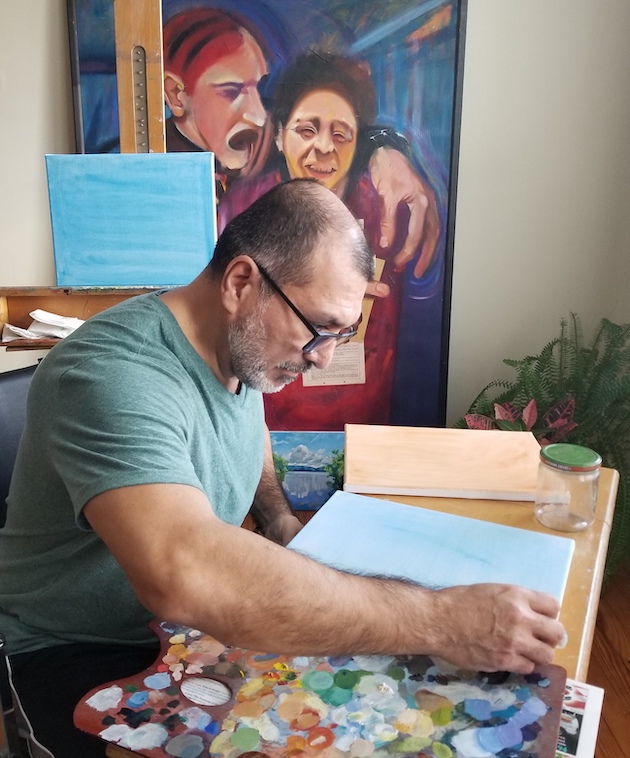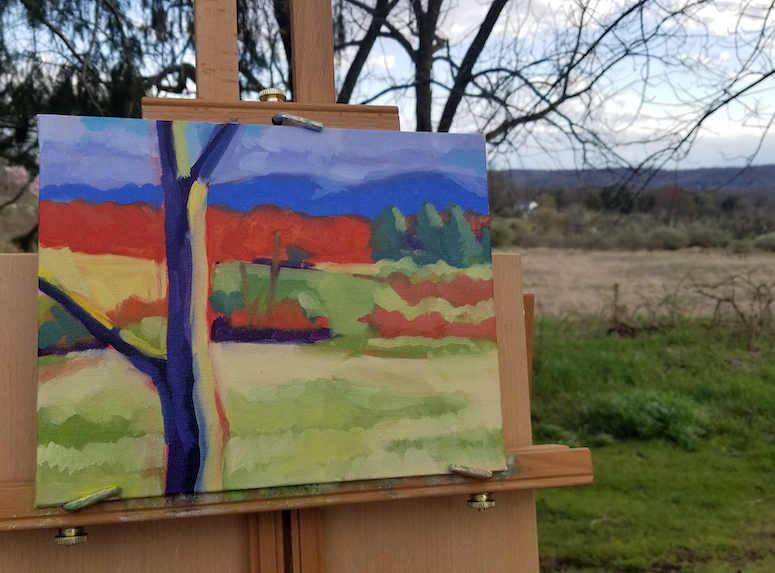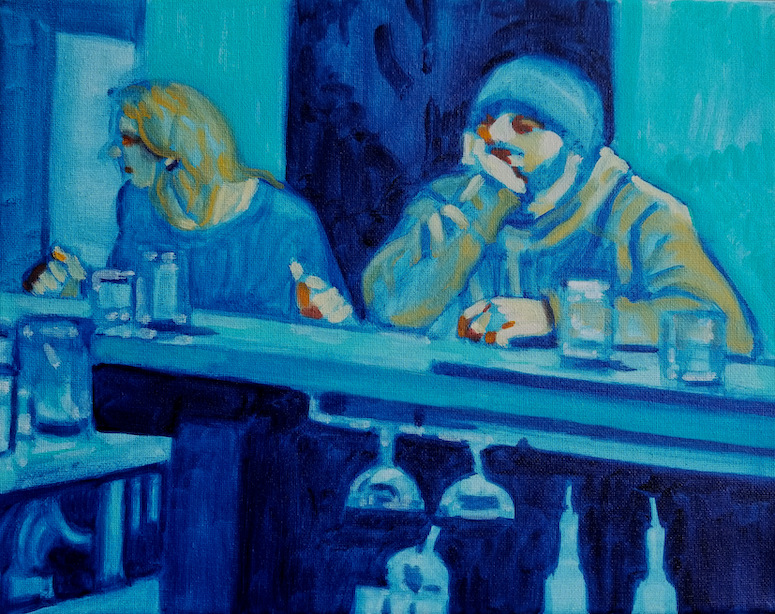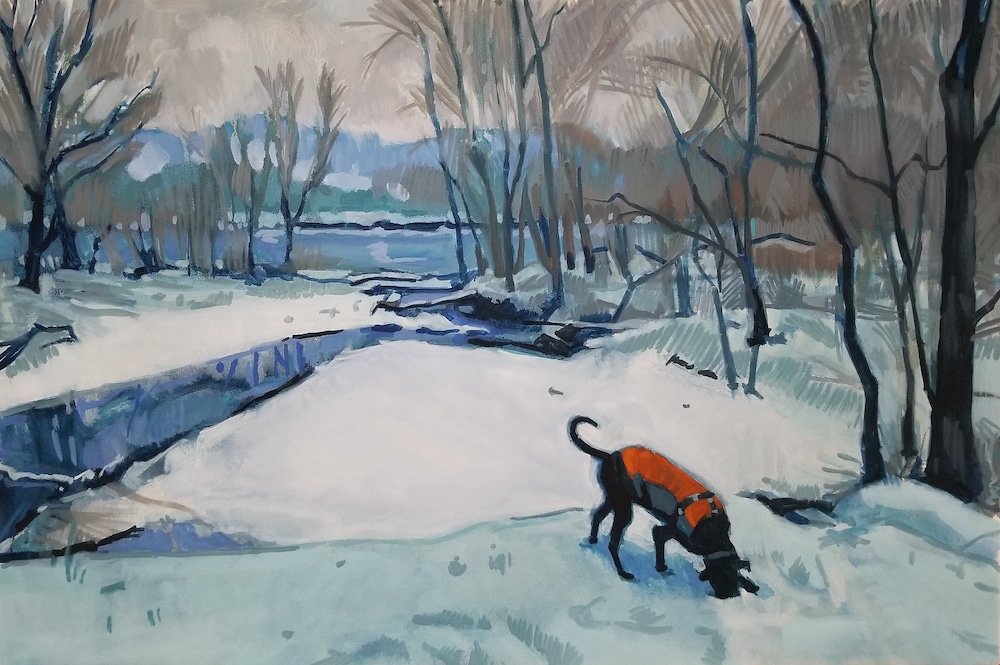
Scumbling is an oil painting technique used by many painter’s throughout history. To achieve this technique, you apply a thin or transparent layer of paint over a dried layer of paint resulting in a visual, color combination of both layers.
Why you should use this technique
As artists, we’re always running into roadblocks during the painting process. Scumbling can be used as a potential solution during these times. You can use it to add depth by adding contrasting color layers if your painting is too monotone. Conversely, you can reduce contrast in an area with this technique.
How to start scumbling using oil paint
- Begin with a dried base layer of paint.
- You can use either a transparent color (like Perylene Red, Viridian Green, etc.) or “thin” out a paint color with a medium.
- Apply the transparent color. I control the transparency by adding medium to achieve a thinner layer of oil paint.
- You can apply more layers to deepen the color or add more layers of different colors. Pleas note that the more layers you add, the less the initial layer will be noticeable.
Scumbling examples

Throughout the history of art, many painters have used this technique. In the detail above, I show how J.M.W. Turner used this technique. You can see the layers of different colors which add texture and depth to the painting. Additionally, the darker areas of this detail are achieved with scumbling. This is a common technique used by Turner.
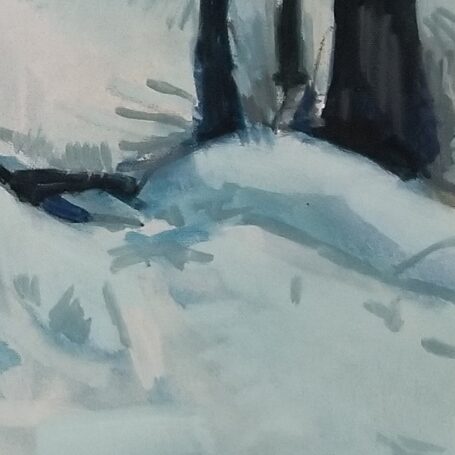
One of the challenges with this painting was to represent “snow” without using one flat “white” layer of paint. I achieved this by beginning with a light blue-green base layer. To this layer, I added a light blue layer that was lighter than the previous layer. In the third layer, I added a white (toned-down with gray) layer leaving me the option of using pure white very sparingly.
Summary
- Scumbling can be used as a solution to visually problematic areas in your painting.
- Use scumbling to add color depth.
- Use this technique to highlight an area or reduce a high-contrast area.
- Scumbling is a classic technique used by many painters of the past (J.M.W. Turner, Claude Monet).
- Scumbling adds an additional technique to your painting arsenal.
Do you scumble? How have you used it in the past? Please leave examples in the comments.
